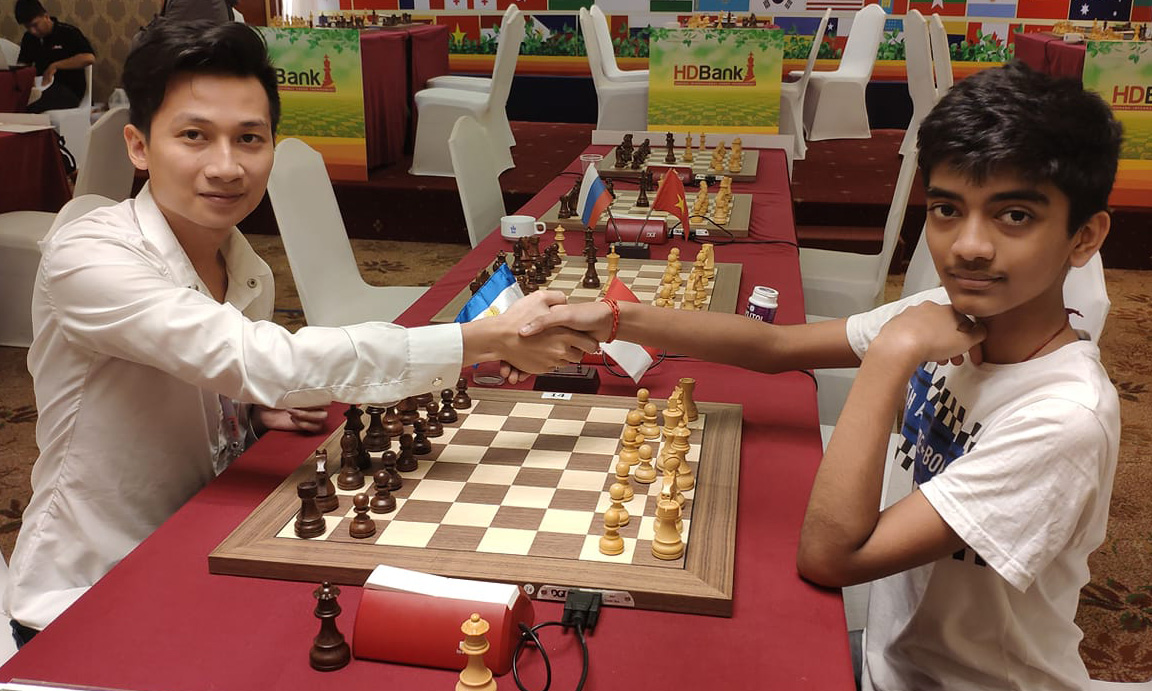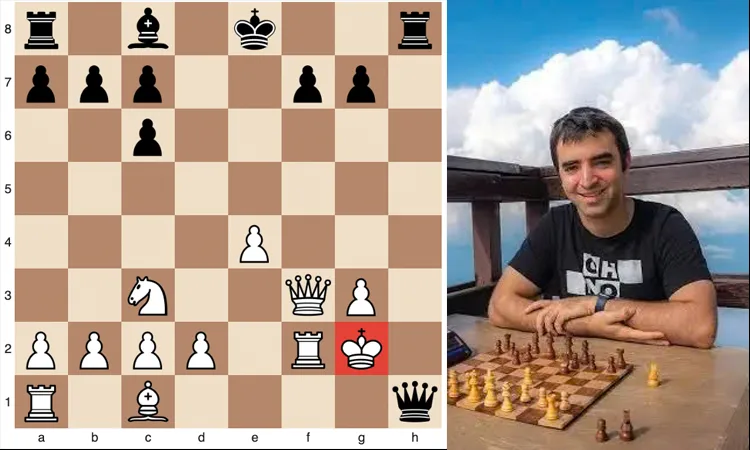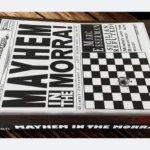On December 30, 2024, in Round 12 of the FIDE World Blitz Chess Championship held online on Chess.com, International Master Eric Rosen produced a textbook example of why the Stafford Gambit still haunts blitz games.
Paired with the black pieces against 2555-rated Grandmaster Sergey Erenburg, Rosen steered the game into a set of sharp, well-practiced traps and delivered a checkmate on move 14. The result 0–1 shocked spectators and sparked an intense discussion across YouTube, Reddit, and chess forums: a supposedly “unsound” gambit beating a seasoned grandmaster on the world stage.
What happened — briefly
The short version is this: Rosen deliberately chose the Stafford Gambit (1.e4 e5 2.Nf3 Nf6 3.Nxe5 Nc6?!), an offbeat and practically dubious line stemming from the Petrov Defense.
Erenburg accepted the gambit and, over the next dozen moves, allowed Rosen to execute a sequence of forcing moves and two decisive sacrifices that ripped open White’s kingside. The game ended with the mating blow 14…Qh1#, after a dramatic bishop sacrifice on f2 and precise follow-up play.
Why Rosen chose the Stafford
Rosen has long been associated with the Stafford Gambit: he uses it frequently in online blitz and has made many instructional videos where he explores its traps and winning patterns. In his own post-game recap, Rosen described the moment: he checked Erenburg’s prior games and noticed the GM had never faced the Knight-to-c6 Stafford move order in tournament play.
Knowing his opponent was unlikely to be prepared for Stafford’s specific tricks, Rosen decided to “go for it.” As Rosen himself put it, he “defeated a grandmaster in 14 moves” — a highlight he called one of the best experiences of his year.
A move-by-move look (essential moments)
The critical sequence is short and cinematic. After the defining Knight-c6 insertion on move 3, the game continued:
There are a few instructive features here. First, Rosen deliberately eschewed the absolutely “best” engine line at one point — he said he knew 6…Qd4 was often strongest after Be2 — and instead played 6…h5 to set psychological and tactical bait.
The idea was to establish the Ng4/Qh4 motif and to create tactical motifs around the f2 square and the h-file. When White castled and later played moves like Kg2 and Rxf2, Rosen had the exact combination prepared: sacrifice a knight to pry open the h-file, then unleash the queen and bishop around the enemy king.
Two sacrifices make the attack
The game hinges on two decisive material sacrifices. First came the typical Stafford-style knight sacrifice on g4 (after …Ng4 and an exchange on g4), intended to break White’s pawn shield and open lines.
Later, Rosen played 11…Bxf2 — a bishop sacrifice that collapses the White kingside and forces concessions that lead to mating nets.
After White recaptured (12.Rxf2 in the actual game), the harmonic coordination of queen, rook and pawns enabled the final mating attack along the h-file.
Why this wasn’t just luck
Spectators were quick to attribute the result to surprise or a blunder on the GM’s part — and to a degree that’s fair: the Stafford Gambit is considered objectively dubious by engine standards. But two factors made Rosen’s win repeatable rather than accidental:
- Preparation and repetition. Rosen has played this exact structure hundreds of times online. In his recap he noted that the position after …Bc5 had occurred for him close to a thousand times on his channel. Familiarity with the motifs — which squares to target, where to play the queen, when to sacrifice — turns theoretical weakness into practical strength in short time controls.
- Time pressure and psychology. Blitz time controls compress calculation and favor players who can play the “right” aggressive moves quickly. Rosen blitzed most of his moves; his opponent burned time trying to navigate unfamiliar territory. Many commentators emphasized that even GMs are vulnerable to rare, sharp tricks in rapid and blitz, especially when they haven’t encountered them before.
Community reaction and the “meme” factor
The game became a viral clip. Reddit threads exploded with astonishment, jokes, and debate. Some users marveled at Rosen’s audacity — “No way the mad man did it” — while others mocked the idea that a GM would accept the gambit in a high-level event. Forum analysis dug into engine lines and historical results: yes, Stockfish and modern analysis give White a clear advantage with perfect play, but in blitz the human factor dominates.
Chessgames.com and commentators such as Jan Gustafsson discussed the line live, with Gustafsson half-amused, half-aghast at Rosen’s willingness to play “his own stupid Stafford” in a world championship event.
What the game teaches players
For those who want practical lessons, the episode is a goldmine:
- If you play dangerously, know your traps. Rosen’s preparation turned a dubious opening into a reliable blitz weapon. Study the tactical themes (Ng4, Qh4/Qd4, Bxf2) if you plan to employ Stafford-style ideas.
- If you face it as White, play calmly and prophylactically. Several commenters pointed out concrete defensive moves — like a timely d3 or a cautious c3 — that blunt Stafford’s venom. Refusing to walk into obvious-looking recapture lines can make the difference.
- Respect psychology and time controls. Practical chess often rewards surprise and speed over theoretical purity.

I’m Xuan Binh, the founder of Attacking Chess, and the Deputy Head of Communications at the Vietnam Chess Federation (VCF). My chess.com and lichess rating is above 2300. Send me a challenge or message via Lichess. Follow me on Twitter (X) or Facebook.






